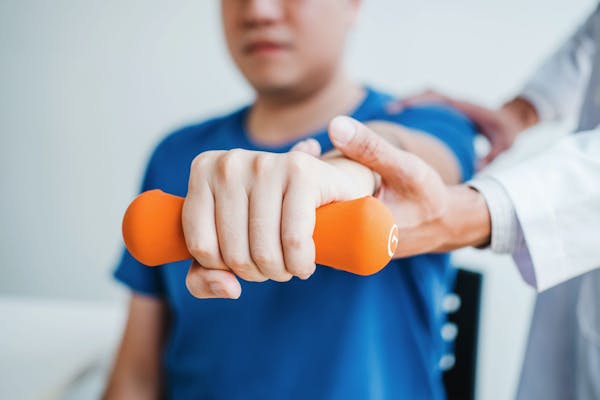Health Blog: Solutions & Wellness Tips
Hands-On Therapy Technique Is Just As Effective For Low Back Pain

As we explained in our first post, physical therapy is strongly recommended as one of the best treatments for most causes of low back pain, and there’s an abundance of research showing that it leads to a variety of improvements. One intervention physical therapists commonly use to treat low back pain is spinal manipulation, a technique in which the therapist applies a controlled thrust with their hands to a joint of the lower spine. Although many studies suggest that spinal manipulation is effective for reducing pain and improving function, international guidelines do not consistently recommend it for low back pain. For this reason, researchers decided to conduct a powerful study called an individual participant data (IPD) meta–analysis to compare the effectiveness of spinal manipulation to other commonly used interventions for low back pain.
A meta–analysis is a comprehensive study that collects and analyses multiple studies on the same topic to determine if an intervention is effective; however, one disadvantage of traditional meta–analyses is that the investigator must rely on how the data are presented in each study, which means poor reporting may often be included in the analysis. An IPD meta–analysis overcomes these issues because the individual data are made available, which leads to more precise data and possibly a more accurate assessment of the treatment’s effectiveness.
For the meta–analysis, researchers performed a search to identify randomized–controlled trials (RCTs)—the gold standard for individual studies—published in 2000 or later on the use of spinal manipulation for low back pain. This search led to 43 RCTs being accepted, about half of which (21) provided data on 4,223 participants. Once these 21 RCTs were established as the sample set for the meta–analysis, researchers documented the specific interventions and their effectiveness on low back pain in each trial. Researchers also assessed the level of bias for each included trial.
Results showed that there was evidence of moderate quality that spinal manipulation reduces pain and improves functional status to a similar degree as other recommended treatments. These improvements were reported at short–term, intermediate–term, and long–term follow–ups. In addition, moderate–quality evidence was identified that spinal manipulation is similarly effective to spinal mobilization, another commonly used manual physical therapy intervention.
Collectively, these findings suggest that spinal manipulation is just as effective as other recommended therapist interventions and may therefore serve a key role in physical therapist treatment plans for patients with chronic low back pain.



